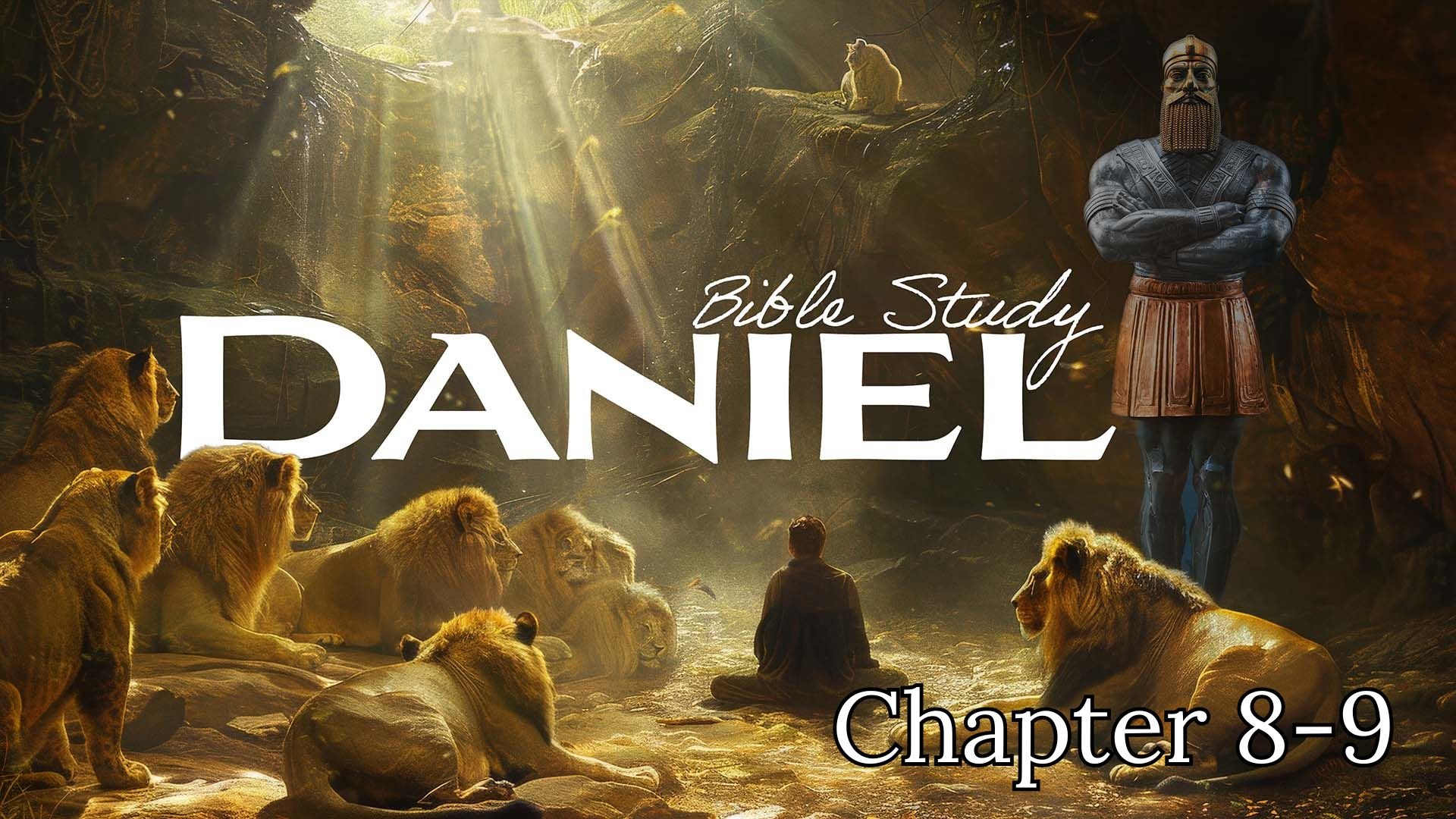
Revelation Ch 10-11 Bible Study
Revelation chapters 10-11
The Book of Revelation.
Chapters 10-11
Zoom AI Recap of the Bible Study.
Please understand that this is an AI summery and may have gotten aspects of the bible study wrong.
Quick recap
The group began by discussing an AI companion tool that provides summaries of Bible study sessions, followed by an instructor-led analysis of Revelation's parallels with Exodus and its symbolic imagery. The discussion explored various biblical themes including crucifixion narratives, the role of witnesses and prophets, and the symbolism of end times events. The conversation ended with an assignment for next week's study focusing on the history of Apollo, particularly his birth narrative involving a dragon.
Next steps
All attendees to research the history of Apollo, specifically the Roman and Greek accounts, for next week's discussion of Chapter 12 of Revelation.
Summary
AI Bible Study Recap Tool
The group discussed an AI companion tool that provides summaries of Bible study sessions, with Grace's site featuring a zoom feature that generates AI recaps of the content. The tool was described as helpful but not perfect, offering a quick way to review what was discussed in class without watching the video. The discussion briefly touched on technical issues with the recording and thermostat settings before moving on to the AI tool demonstration.
Revelation's Parallels and Prophetic Symbols
The instructor discussed the parallels between the Book of Revelation and the Old Testament's Exodus narrative, highlighting how both stories involve plagues and a symbolic lamb, and emphasized that Revelation's intended audience would have understood references to Greek and Roman gods. They read and explained Revelation Chapter 10, which describes an angel with a little book who swears that the mystery of God will be finished after the seventh angel sounds, and the instructor noted that eating the book tasted sweet but caused bitterness, symbolizing the prophetic task ahead.
Biblical Imagery and Symbolism Analysis
The group discussed the imagery and symbolism in the biblical text, focusing on the "little scroll" and its significance compared to larger scrolls, as well as its connection to the sweetness and bitterness of divine revelation. They explored the use of Exodus imagery, such as pillars of fire, and noted references to Psalms. The conversation also touched on the concept of sealing and unsealing messages, with a particular focus on the 7 thunders and their unrecorded utterances. The discussion concluded with an analysis of the temple's measurement, the role of the two witnesses, and the final judgment, emphasizing the transition of power to God's reign.
Exploring Acts and Its Parallels
The group discussed the Book of Acts and its parallels with the Gospel of Luke, suggesting that both texts describe the body of Christ, with Acts focusing on the church. They explored the significance of numbers like seven and 12, as well as references to a 42-month period, which may relate to the siege of Jerusalem. The speaker proposed that the book contains both positive and scary elements, and they shared their theory that it depicts a crucifixion narrative through Paul's shipwreck story.
Revelation Witnesses: Identity Debate
The group discussed the identity of the two witnesses in Revelation, exploring whether they were Moses and Elijah or symbolic representations of Christian martyrs. They examined references in Revelation 6:9 and Revelation 11, noting that the Greek word for "witness" is the same as "martyr." The discussion also touched on the connection between the two olive trees and lampstands in Revelation 11:4, which some interpreted as representing the body of Christ or testifying believers. While the study Bible suggested the witnesses could be modeled after Moses and Elijah, the group acknowledged uncertainty about their exact identity.
Biblical Imagery and Symbolism Discussion
The group discussed the imagery and symbolism in a biblical text, particularly focusing on crucifixion narratives and the separation between God and his people represented by the temple curtain. They explored connections between the text and other biblical references, including Exodus and Matthew, noting similarities in themes such as the presence of God with humanity and the concept of resurrection. The discussion also touched on the roles of the two witnesses and the lampstands in Revelation, drawing parallels to other biblical figures and events.
Biblical End Times Symbolism
The group discussed biblical passages about the end times, focusing on the symbolism of Sodom, Egypt, and Babylon, and their connections to power and human hubris. They explored themes of crucifixion, resurrection, and the ultimate victory of good over evil, with particular attention to the role of witnesses and prophets. The discussion concluded with an analysis of the word "woe" and its implications for understanding tribulation and judgment. For next week's study, participants were encouraged to research the history of Apollo, particularly focusing on his birth narrative involving a dragon.
Revelation Ch 8-10 Bible Study
Revelation chapters 8-10
The Book of Revelation.
Chapters 8-10
Zoom AI Recap of the Bible Study.
Please understand that this is an AI summery and may have gotten aspects of the bible study wrong.
Quick recap
In this class on the Book of Revelation, students progressed from studying the seven churches to examining apocalyptic imagery including the four horsemen, seven seals, and trumpets that bring various catastrophes to earth. The discussion focused on interpreting symbolic elements such as the four horsemen, locusts with scorpion tails, and a 200-million-strong army as coded critiques of Roman imperial power, with particular attention to how early Christians would have recognized these references. Despite the devastating plagues described in the text that destroy one-third of creation, the class noted the recurring theme that the remaining people still refuse to repent of their idolatry and immorality, drawing parallels to the Exodus narrative while also observing hopeful symbols like the rainbow representing God's promise amid destruction.
Summary
Revelation's Seals and Trumpets
The class continues their study of the Book of Revelation, discussing how they've moved from examining the seven churches to witnessing the grand majesty of God's kingdom where a lamb sits on the throne. The instructor explains that the text then transitions to "scary stuff" including the four horsemen of the Apocalypse and the seven seals, emphasizing that Scripture often asks readers not to look away from suffering and destruction. After reviewing Chapter 8, which describes the opening of the seventh seal and the sounding of four trumpets bringing various catastrophes to earth, the class discusses how understanding Revelation requires familiarity with earlier biblical texts, particularly Hebrew prophetic literature and the Exodus narrative.
Biblical Apocalypse Symbolism Discussion
Pamela raises a question about the symbolism of one-third of everything being destroyed in Chapter 8, which the class discusses as potentially representing substantial but not total destruction, suggesting room for redemption. The class explores whether the destruction comes from God or humans, comparing it to biblical plagues and noting that famines are typically caused by geopolitical distress rather than natural causes. In Chapter 9, they examine apocalyptic imagery including locusts with scorpion tails, a 200-million-strong army, and plagues that kill a third of mankind, noting that despite these calamities, the remaining people still refuse to repent of their idolatry and immorality.
Revelation's Locusts: Imperial Rome Critique
The class discusses the fifth and sixth angels in Revelation, focusing on the apocalyptic imagery of locusts and their connection to Roman imperial power. They interpret the locusts as representing Roman military forces, noting details like the sound of chariots and the reference to "Apollyon" as a critique of Roman emperors who claimed connection to Apollo. The discussion explores how early Christians would have recognized these as coded references to Rome's "peace through violence" approach, with the instructor suggesting the text uses horror imagery and wordplay to critique imperial power while noting the measured nature of divine retribution.
Biblical Plagues and Human Stubbornness
The class discusses the numerical references in the text, particularly the "200 million" army of horsemen, examining how different Bible translations render this number (some as "twice 10,000 times 10,000"). They analyze the description of horses with lion-like heads that emit fire, smoke, and brimstone, noting these plagues killed a third of mankind. The class observes that despite these devastating plagues, the remaining people did not repent, which they characterize as "reliably stupid."
Unrepentance and Divine Revelation
The class discusses the theme of unrepentance in Revelation, noting how despite plagues and destruction, people still don't repent, drawing parallels to the Exodus account. They examine the meaning of "Apollyon" as a destroyer figure and transition to analyzing Revelation 10, which introduces a mighty angel with a rainbow on his head holding a little book/scroll. The class notes the significance of the rainbow as God's promise appearing amid destruction, the recurring pattern of sevens, and discusses the translation differences between "little book" and "little scroll." They observe that consuming the scroll is sweet in the mouth but bitter in the stomach, suggesting difficult truths.
Revelation Ch 7-8 Bible Study
Revelation chapters 7-8
The Book of Revelation.
Chapters 7-8
Zoom AI Recap of the Bible Study.
Please understand that this is an AI summery and may have gotten aspects of the bible study wrong.
Quick recap
The meeting focused on an in-depth discussion of the Book of Revelation, exploring its symbolism, imagery, and connections to both Jewish culture and Christian liturgical practices. The group examined various biblical themes including the significance of numbers, urban versus pastoral living, and the interpretation of key passages like Revelation 7 and 8. The discussion concluded with an exploration of Isaiah's connections to historical judgments and the recurring theme of divine judgment against various "Babylons" throughout history.
Summaries
Understanding the Book of Revelation
Cris led a discussion on the Book of Revelation, focusing on its primer-like introduction that sets the stage for understanding the rest of the book. He explained that Revelation presents the kingdom of God as opposed to Babylon, which represents power and control. Cris highlighted the significance of the lamb that was slain and its connection to the scroll's seals, noting that many Christian liturgical practices derive from this text. The discussion also covered the four horsemen of the Apocalypse, their symbols, and their connections to historical contexts, as well as the cries of martyrs and the behavior of the kings and wealthy in the face of impending doom.
Jewish Cultural Number Symbolism
Cris and the group discussed the significance of the number 12 and its importance in Jewish culture, particularly in relation to the 12 tribes of Israel. They noted that while the tribe of Dan was omitted, the number 12 was still significant and may have been chosen to maintain its cultural importance. Cris also mentioned that the 12,000 sealed from each tribe could represent a large number, similar to how "thousands" were used to emphasize size in ancient texts.
Biblical Perspectives on Urban Living
Cris discussed the biblical perspective on urban versus pastoral living, noting that cities are often associated with negative aspects while rural or pastoral settings are valued. He explored how various biblical figures, including Jesus and Daniel, navigated city life while maintaining their values, suggesting that living in cities doesn't inherently defile a person. Cris also touched on the idea that true purity comes from within, rather than from living in remote areas, and referenced C.S. Lewis's Space Trilogy to illustrate this concept.
Interpreting Revelation's Global Vision
Cris led a discussion on Revelation 7, emphasizing that the Bible is not a checklist but a text that encourages wrestling with God's meaning. He explained the imagery of the 144,000 sealed servants, noting that while this number could represent the tribes of Israel, John's text refuses to localize it, instead depicting a diverse multitude from all nations. Cris also suggested that Revelation 15:3-4 is a song celebrating redemption and recreation, drawing parallels to Genesis 1 and the Maccabees. He proposed that Genesis 1 might be a song of creation, reflecting order emerging from chaos, and that Revelation 15:3-4 could be seen as a new creation or redemption song.
Interpreting Symbols in Revelation 8
Cris and Pam discussed the interpretation of Revelation 8, focusing on the imagery of the eagle, the star that falls from heaven, and the reference to wormwood. They explored the possibility that these symbols might represent Roman gods or divine intervention, with Cris suggesting that John's audience might have made a mistake in identifying the eagle as an angel. They also considered the historical and cultural context of Rome and its gods, noting the similarities between Roman and Greek mythology. Cris mentioned that they would continue discussing this topic in next week's meeting.
Biblical Interpretations of Divine Judgment
Cris led a discussion on biblical interpretations, focusing on the Book of Isaiah and its connections to the fall of Babylon and Rome. He explored the imagery of divine judgment, comparing it to the plagues described in Exodus and the fall of Jericho. Cris emphasized that these judgments are recurring themes in history, suggesting that "Babylons" exist in various forms today. He also noted the significance of the number seven in the text and its relation to previous chapters. The group will continue exploring these ideas in the next meeting.
Revelation Ch 6-7 Bible Study
Revelation chapters 6-7
The Book of Revelation.
Chapters 6-7
Revelation Ch 4-5 Bible Study
Revelation chapters 4-5
The Book of Revelation.
Chapters 4-5
Revelation Ch 1-2 Bible Study
Revelation chapters 1-2
The Book of Revelation.
Chapters 1-2
Revelation Overview Ch 12-22 Bible Study
Revelation overview chapters 12-22
Overview 2 of the Book of Revelation.
Chapters 12-22
Matthew Ch 26-27 Good Friday Bible Study
Bible Study of Matthew Chapter 26-27 Good Friday
Looking at the Book of Matthew Chapter 26-27 Good Friday
Daniel Ch 10-12 Bible Study
Bible Study of Daniel Chapter 10-12
Looking at the Book of Daniel Chapter 10-12
Daniel Ch 8-9 Bible Study
Bible Study of Daniel Chapter 8-9
Looking at the Book of Daniel Chapter 8-9
Daniel Ch 7 Bible Study
Bible Study of Daniel Chapter 7
Will be posted Thursday afternoon
Looking at the Book of Daniel Chapter 7
Daniel Ch 6 Bible Study
Bible Study of Daniel Chapter 6
Looking at the Book of Daniel Chapter 6
Daniel Ch 5 Bible Study
Bible Study of Daniel Chapter 5
Looking at the Book of Daniel Chapter 4
Daniel Ch 4 Bible Study
Bible Study of Daniel Chapter 4
Looking at the Book of Daniel Chapter 4
Daniel Ch 3 Bible Study
Bible Study of Daniel Chapter 3
Looking at the Book of Daniel Chapter 3
Daniel Ch 2 Bible Study
Bible Study of Daniel Chapter 2
Looking at the Book of Daniel Chapter 2
Daniel Ch 1 Bible Study
Bible Study of Daniel Chapter 1
Looking at the Book of Daniel Chapter 1




















